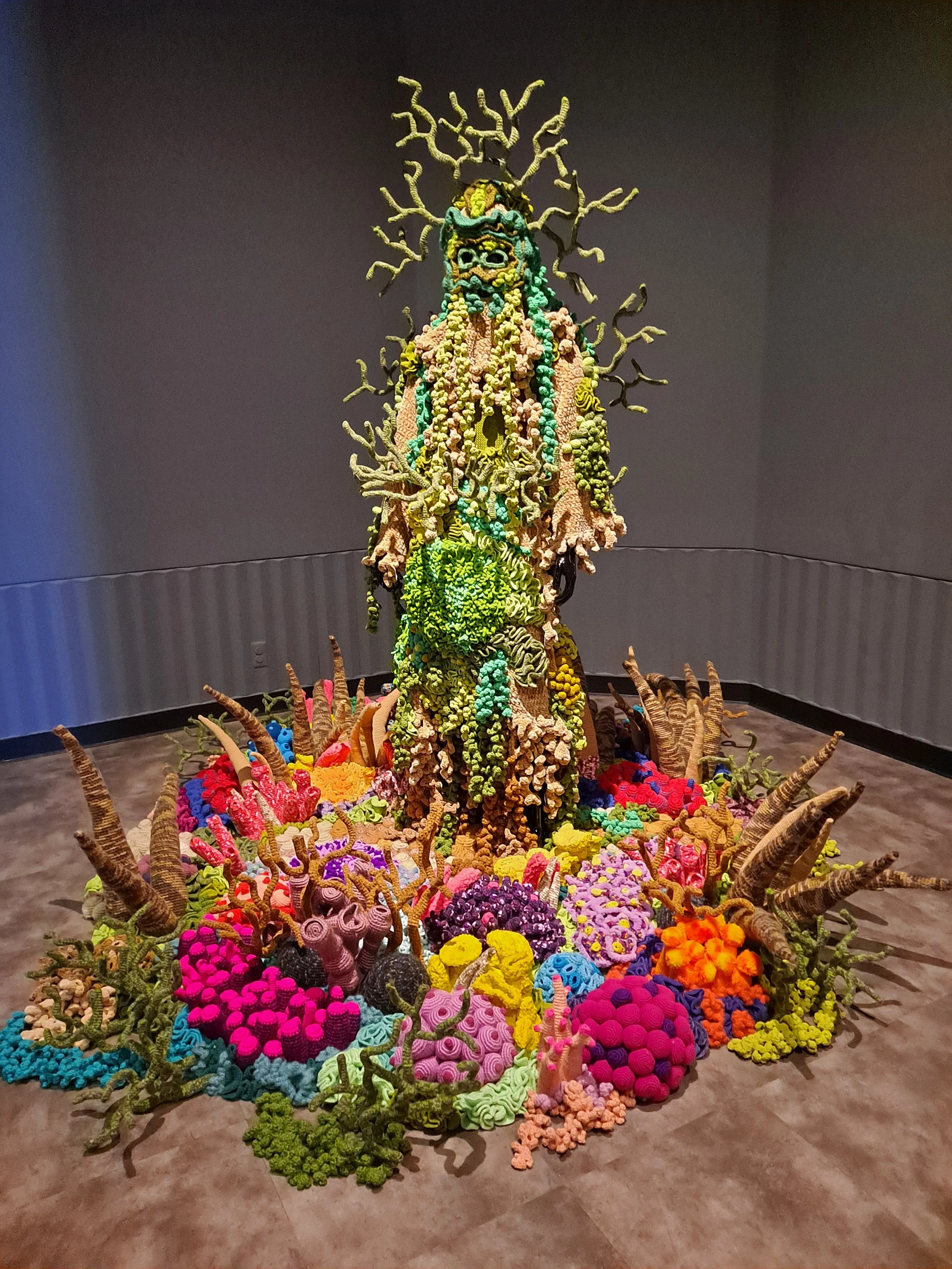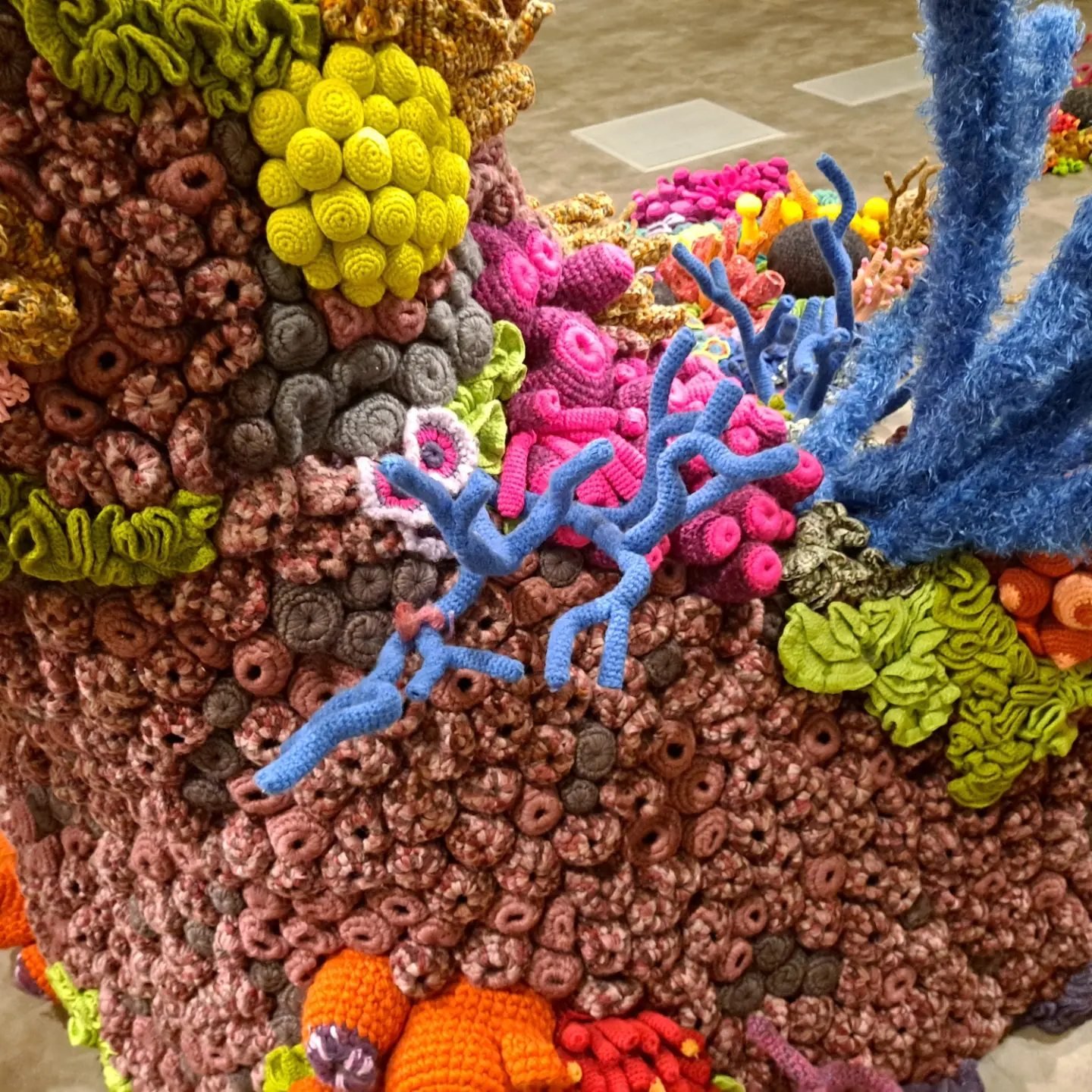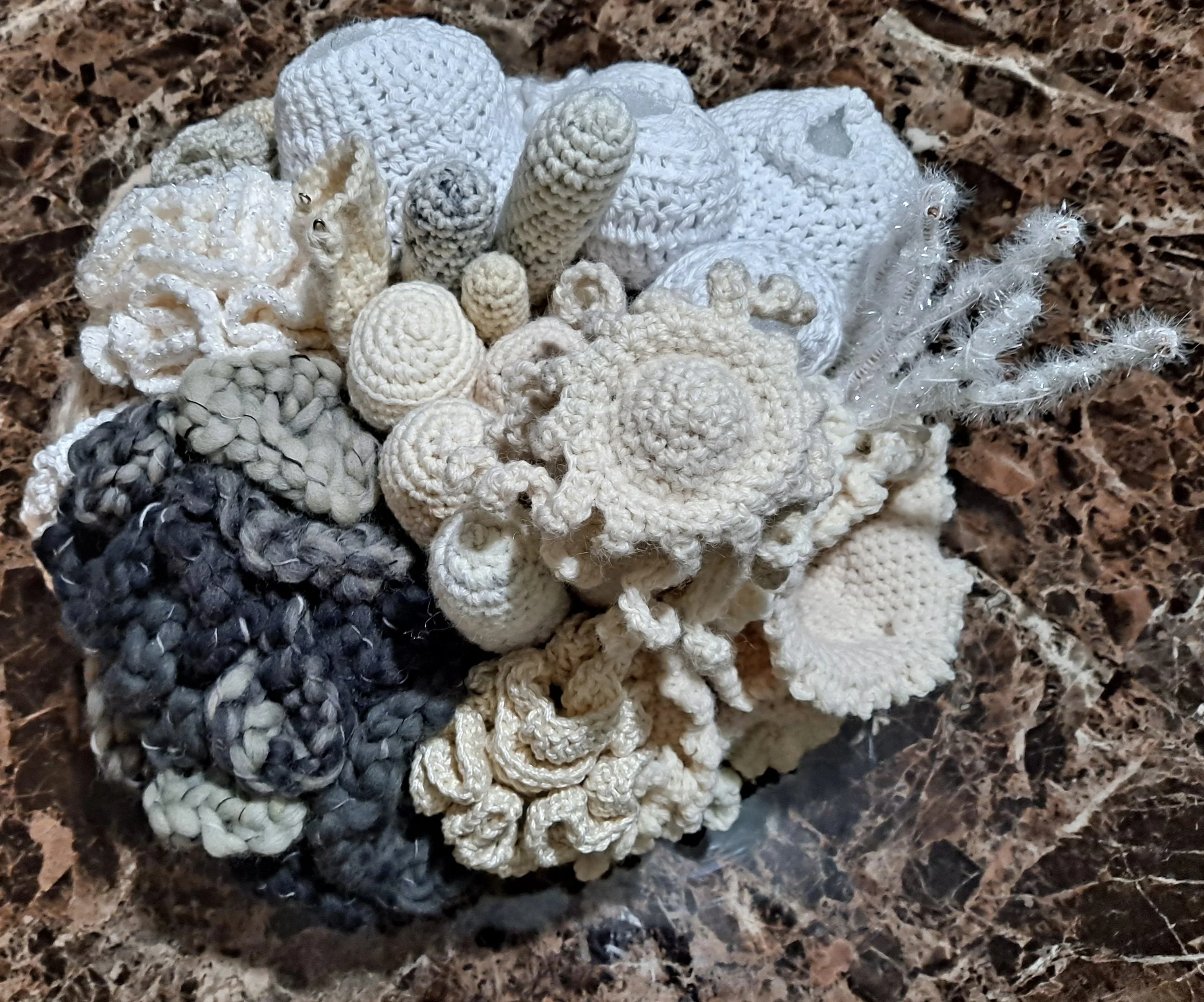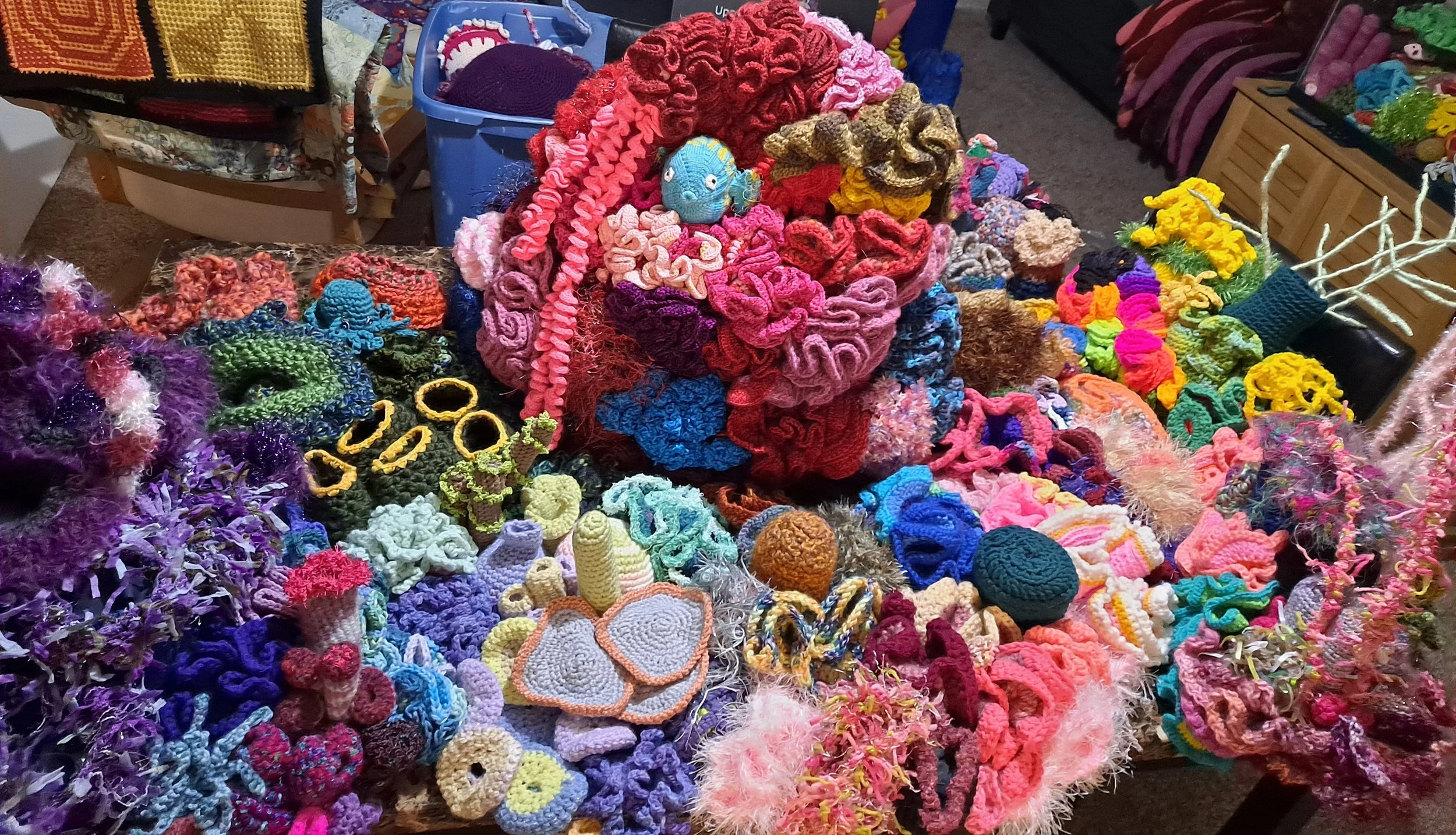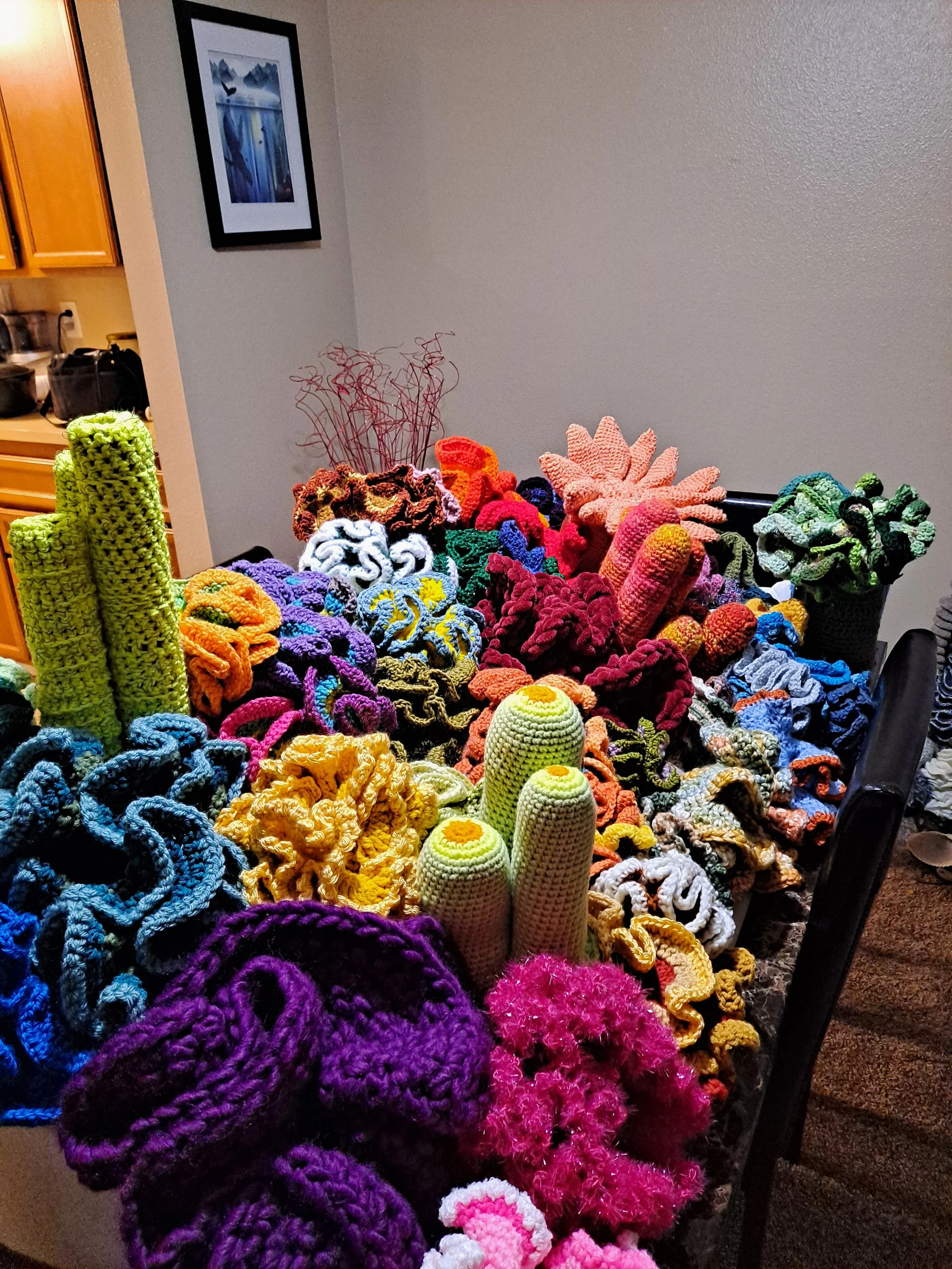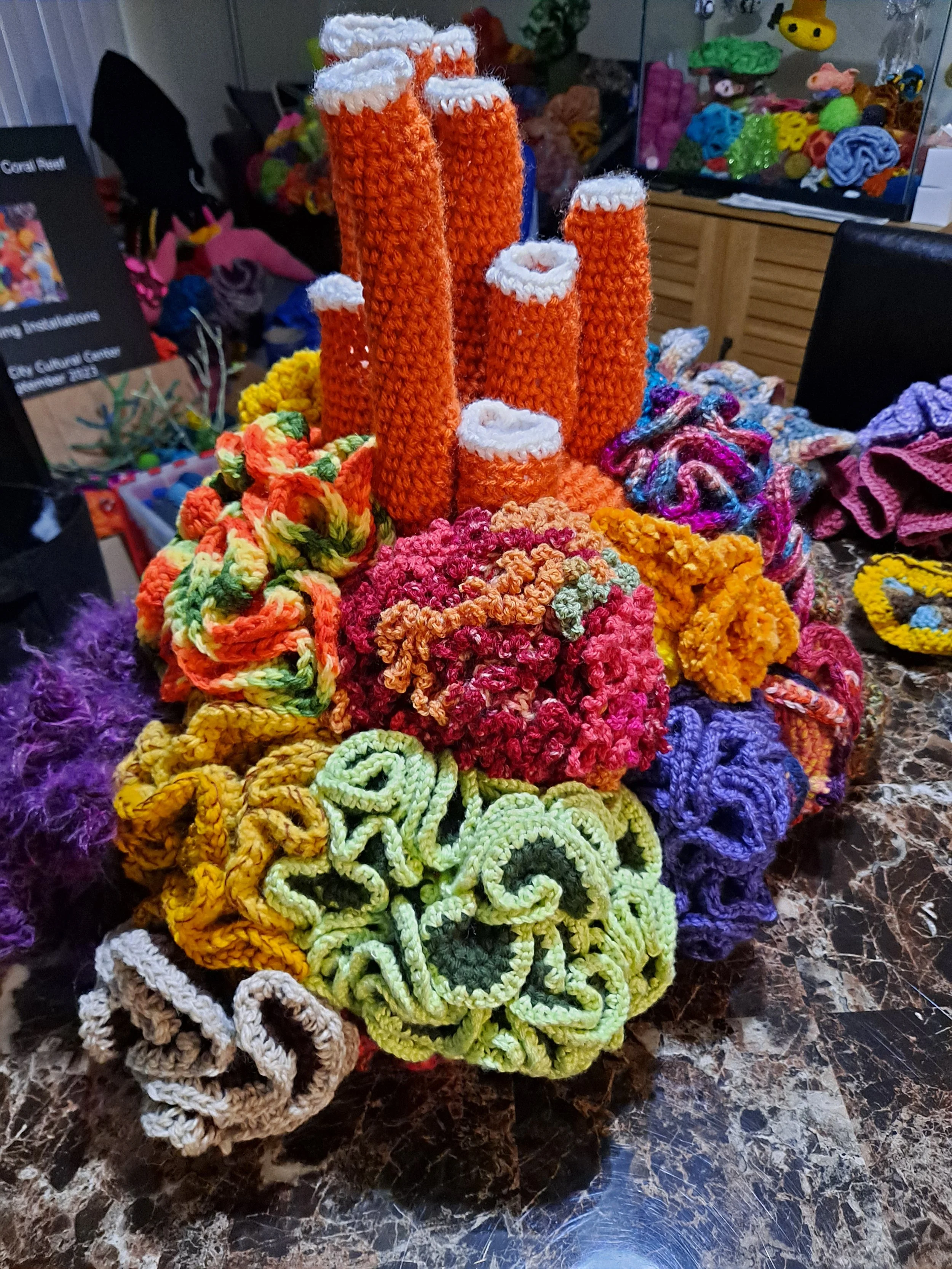As we plan for the exhibit coming up in September at the Lincoln City Cultural Center, one of the things that I wanted to consider was the actual visual impact of entering the space. One of the features of the Wertheim sister’s fiber art coral reef in Baden Baden was the coral wall that ran along the outer perimeter of the room.
Thankfully, I had a couple of wire frame book cases that I had disassembled almost a year ago and this provided me with forty wire frames that we can easily cover in hyperbolics and hang around the room.
Hyperbolic corals are certainly the “gateway coral” to creating pieces for the reef. We have some crafters that only want to make straight forward (ha ha) hyperbolics, other crafters that want to make hyperbolics in creative and fascinating materials, and still others who make a couple and then go on a search for other coral forms to create. For all of those people who ask “Do you still need these hyperbolics?” The answer is yes! I have created fourteen frames so far and that is enough to cover the first wall of the textile studio. We will use as many frames as we have hyperbolics to cover them.
All that to say, keep up with the hyperbolics if that is your happy place. I have been playing around with them quite a bit lately and while I pass out the patterns from the Institute for Figuring at fiber fairs and coral making days, I have to admit, I usually play fairly fast and loose with their patterns.
A good example of this would be the simple circular hyperbolic plane. I usually crochet in fingering or worsted weight yarn but the other day, I created a coral in bulky. While I wanted a curly coral, I didn’t necessarily want a tight, rigid coral. I have found that starting the first few rows by increasing once in every single stitch can start you off in a good direction, filling out the middle quickly and hiding the center. You can then choose your rate of increase depending on your chosen yarn and hook. I have also played around with using fingering weight yarn with a C or D hook and increasing three stitches into every stitch for the first few rounds and then going down to either two in every stitch or two in every second stitch. This makes your coral a little softer looking, not quite so small and tight, but yet beautifully curly.
I’ve also been playing around with different types of edging. For some yarn that might not be the most attractive, throwing on a fuzzy novelty yarn edging can basically hide the yarn beneath and make an interesting texture. For yarn that is beautiful and just needs a little lipstick, choosing a threadlike novelty yarn, perhaps a silver or gold, will highlight the hyperbolic curves while still honoring the beautiful yarn beneath. Another thought is creating a scalloped edge to your hyperbolics with a contrasting or complimenting yarn.
Every now and then I actually sit down and do the math and it dawns on me how quickly our installation is coming up. We’ve been building up to this for about two years now and it almost doesn’t seem real. I hope, if you are anywhere near Lincoln City, that you will join us for our opening night on September 22 which will include a viewing of Saving Atlantis.
For now, stop by the Fat Lamb Fiber Festival this coming weekend for a little shopping, a little lamb snuggling and a little reef inspiration.
































